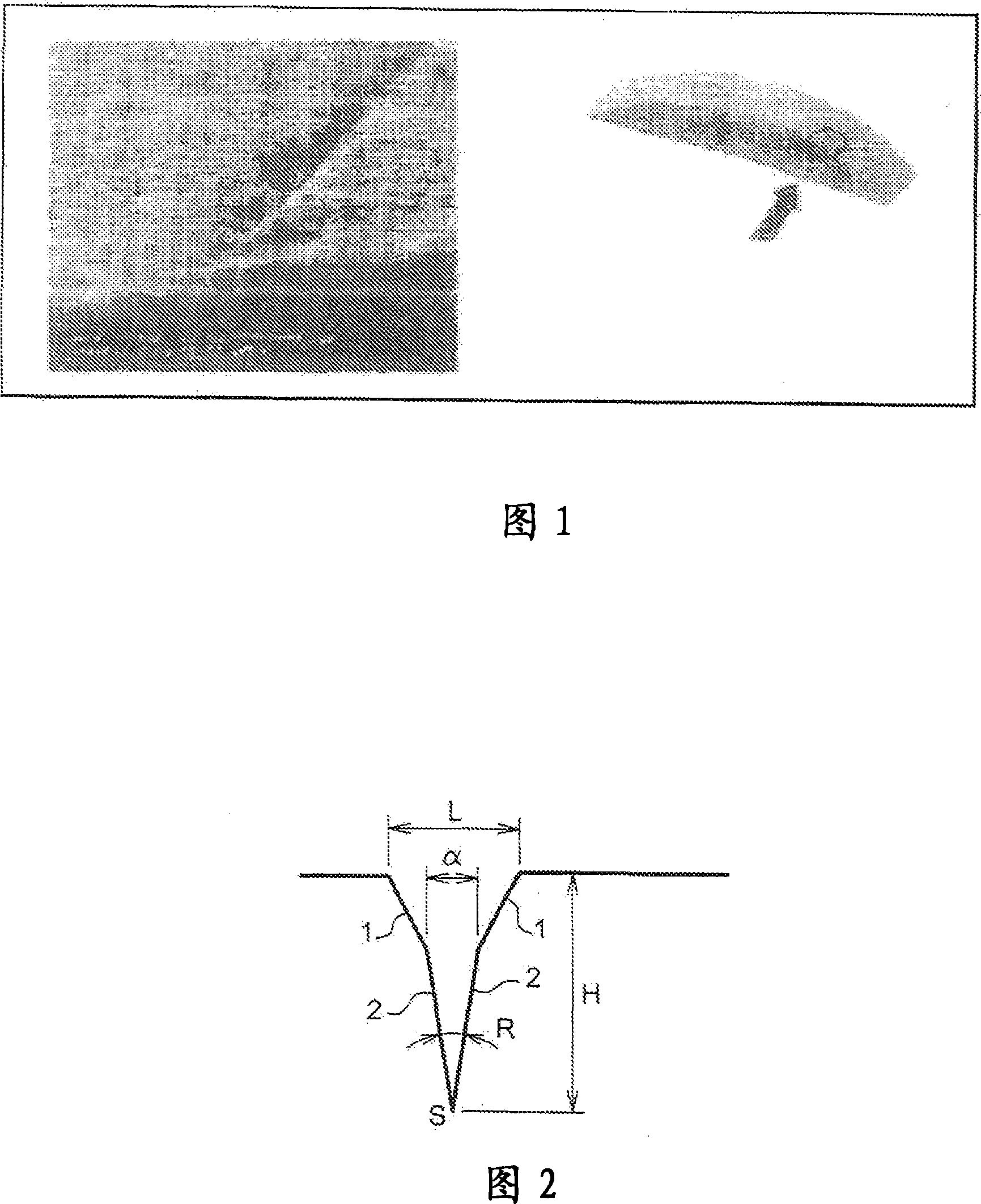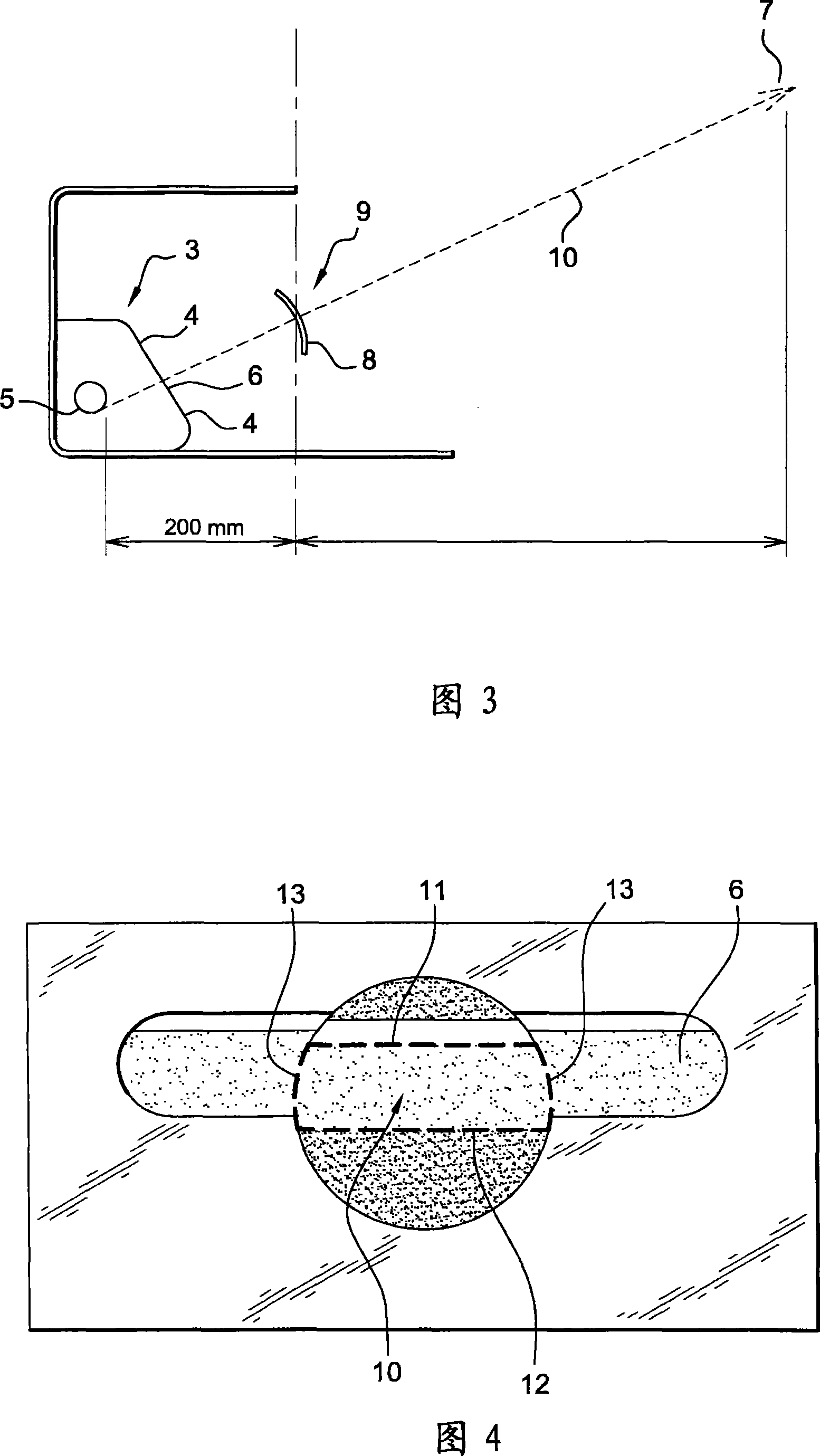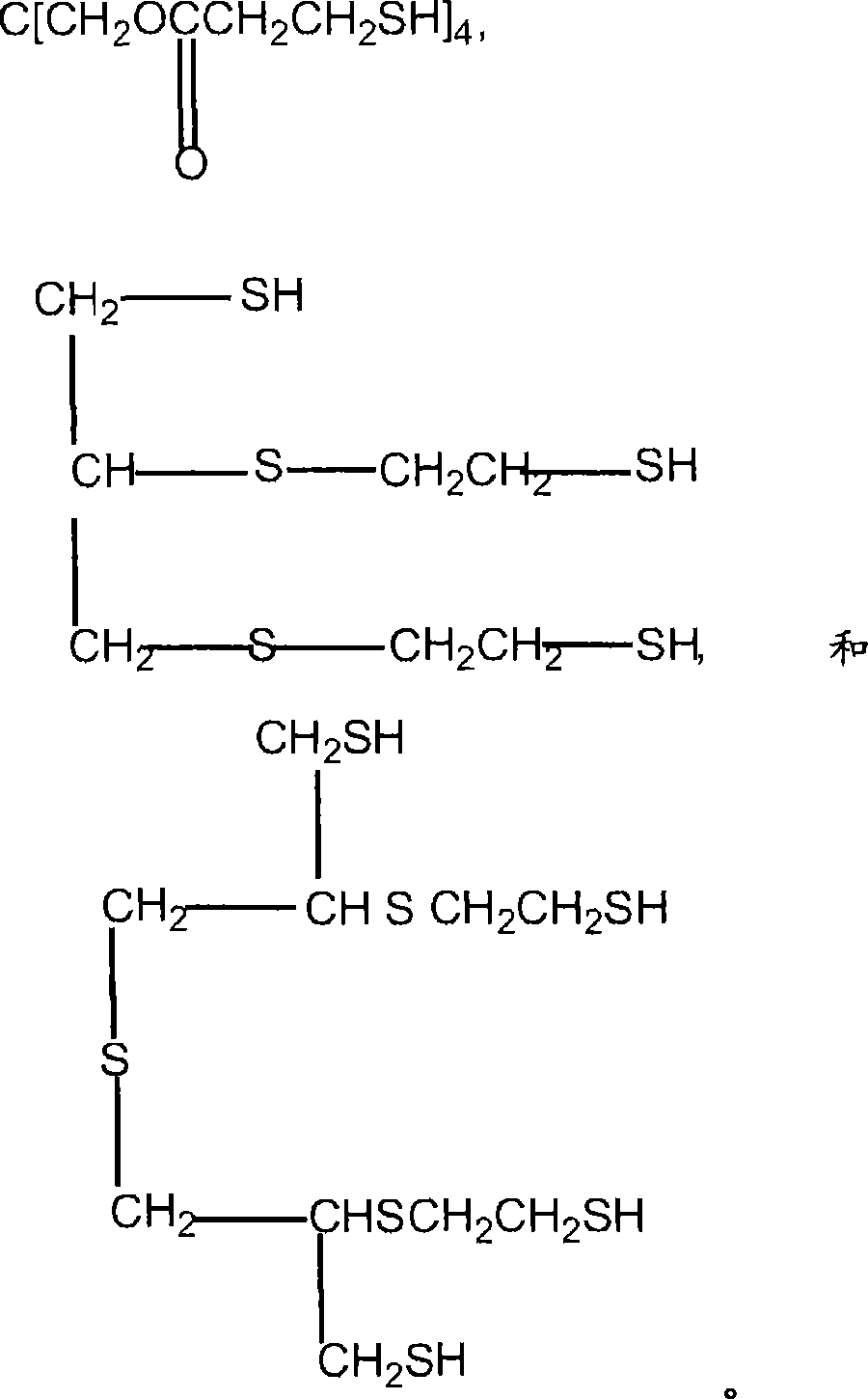Method for producing an article made of a transparent material devoid of visible surface lines and the thus obtained article
A technology for surface treatment and products, applied in the field of transparent products, which can solve the problems of difficult to control deposits, large recommended thickness of coatings, etc.
- Summary
- Abstract
- Description
- Claims
- Application Information
AI Technical Summary
Problems solved by technology
Method used
Image
Examples
Embodiment
[0294] The following examples illustrate the invention.
[0295] In this example, unless otherwise stated, all percentages are percentages by weight, and the refractive index is measured at 25° C. and wavelength λ=550 nm.
[0296] For a refractive index n of base 6.75 (base = 530 / R in mm, where R is the radius of curvature of the lens), made from MR7 material (based on polythiourethane) sold by MITSUI D 25 A semi-finished spherical ophthalmic lens with a power of 1.660 and a power of -6.00 diopters was subjected to the surface treatment shown below.
[0297] Regardless of whether it is concave or convex, the surface treatment is carried out as follows:
[0298] ●Processed on a SCHNEIDER HSC100 machine. Refining is carried out using a single crystal diamond tool with a radius of 2 mm, a rotational speed of less than or equal to 600 rpm, a forward motion of less than or equal to 0.04 mm / rev, and a depth of cut equal to 0.1 mm.
[0299] • Polishing on a SCHNEIDER CCP101 machi...
Embodiment 5 and 6
[0339] Examples 5 and 6: Deposition of coating compositions with variable contact angles
[0340] Using two different concentrations of the HMP solvent 4-hydroxy-4-methyl-2-pentanone (CH 3 ) 2 C(OH)CH 2 COCH 3 Two masking coating compositions were prepared: solution M3 (by diluting M2 at 70% by weight in HMP) and solution M4 (by diluting at 30% by weight in HMP). This changes the contact angle of the composition on a substrate with a refractive index of 1.67.
[0341] First, the contact angles of paint films M3 and M4 on molded double-sided 1.67 ophthalmic lenses were measured. The operating procedures are as follows:
[0342] The device used was DIGIDROP manufactured by GBX Instrumentation Scientifique. This is a device for automatic measurement of contact angle and wettability. DIGIDROP includes camera, image analysis and processing system and measurement program.
[0343] Droplet microcontrollers make it possible to deposit precise amounts of liquid simply using a v...
PUM
| Property | Measurement | Unit |
|---|---|---|
| thickness | aaaaa | aaaaa |
| thickness | aaaaa | aaaaa |
| surface roughness | aaaaa | aaaaa |
Abstract
Description
Claims
Application Information
 Login to View More
Login to View More - R&D
- Intellectual Property
- Life Sciences
- Materials
- Tech Scout
- Unparalleled Data Quality
- Higher Quality Content
- 60% Fewer Hallucinations
Browse by: Latest US Patents, China's latest patents, Technical Efficacy Thesaurus, Application Domain, Technology Topic, Popular Technical Reports.
© 2025 PatSnap. All rights reserved.Legal|Privacy policy|Modern Slavery Act Transparency Statement|Sitemap|About US| Contact US: help@patsnap.com



